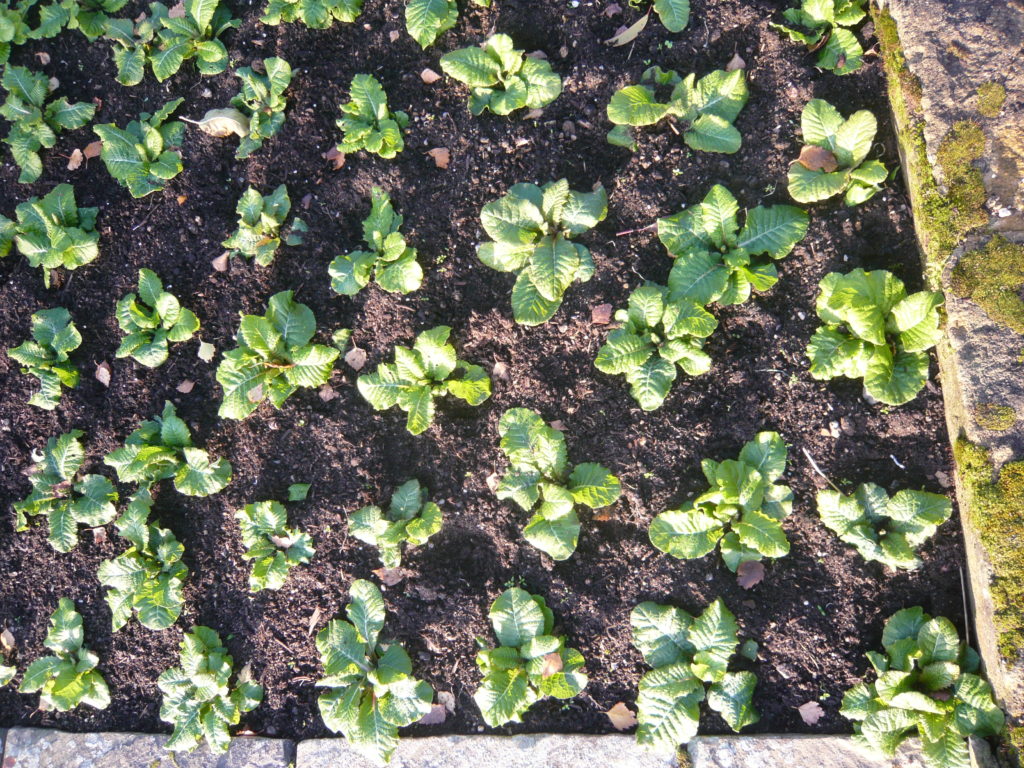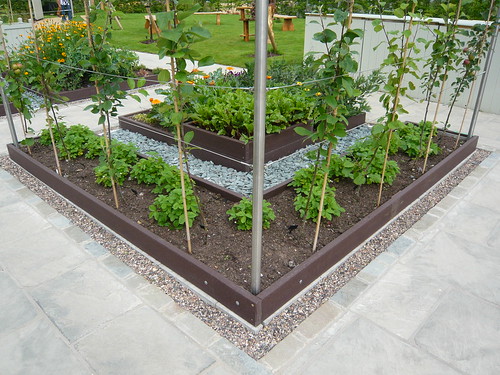Raised Beds
Several companies manufacturers produce raised beds kits for gardens. Marmax products make their raised beds from recycled High Density Polyethylene (HDPE) and donated this set to the library and learning centre at RHS Harlow Carr when it was new. Hard wearing, long lasting and doing its bit for recycling this use of plastic in the garden is to be admired.
Supplied in flat pack, kit form the sides are in depths of 140mm so you can also make 280 or 420 deep beds by using 1-3 levels screwed together. In old money I make that five and a half inches 11″ and 17″ or thereabouts.
Other Methods.
- The old railway sleepers took a bit of a dive when creosote was banned or frowned upon in gardens. The seepage of chemicals from sleepers seems small to me and the method is still popular if you find old sleepers.
- DIY fanatics may use log piles or build more substantial retaining walls in breeze blocks or natural stone
- Old pallets, preformed or tanalised wood and concrete blocks can be features as raised beds. ( see some more pictures for inspiration and ideas on the type of raised on these images.)
Uses of Raised Beds
- When top soil is shallow raising a bed with better soil helps plant draw moisture and sustenance.
- Raised beds help improve drainage on heavy soil.
- Raising a bed can be used to introduce a different soil type to your garden.
- Beds warm up quicker when raised and can be angled towards the sun.
- Smaller plants can be lifted for closer inspection or to get the perfume and it may avoid getting down on your knees.
- Flowers, vegetables and soft fruit can all be successfully grown in a raised bed. Often prize winners are grown with augmented levels of soil where conditions can be controlled from a raised bed.
- Raised beds can be very useful to those suffering visual impairment, restricted mobility or other physical disabilities.

Retaining wall filled with good clean compost a raised bed for primula

A brick wall to allow a slope alongside a raised bed of spring Daffodils
